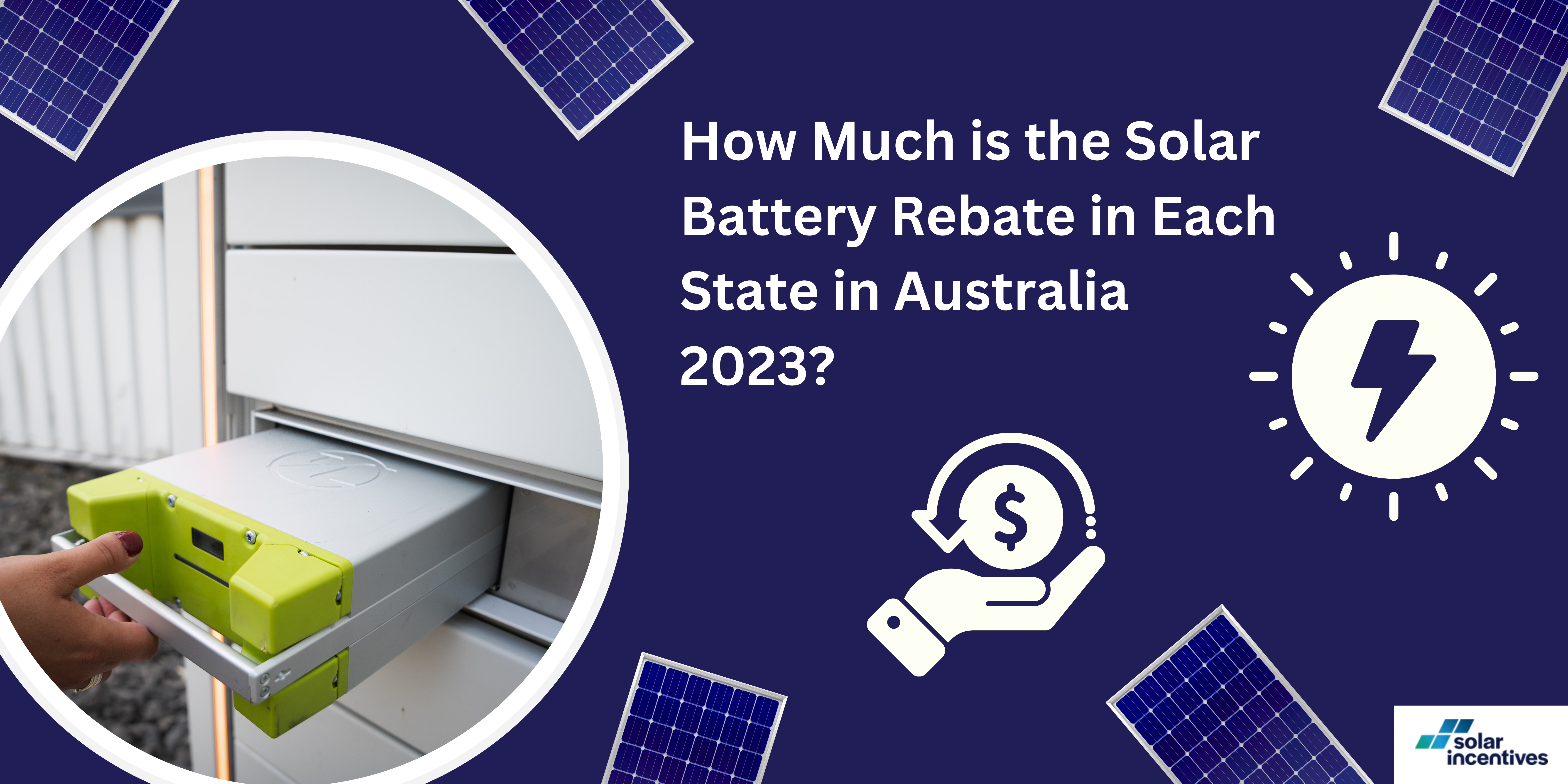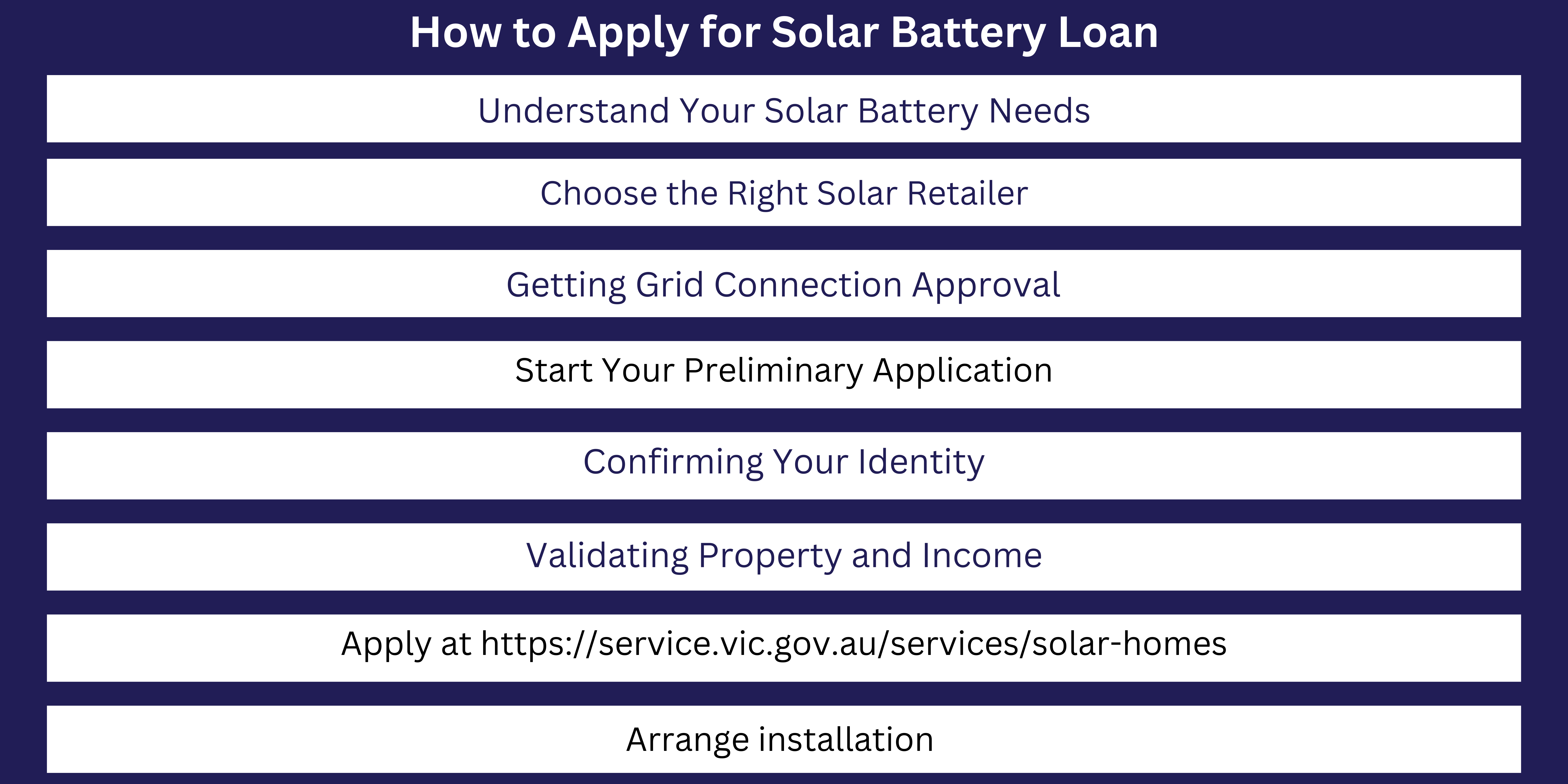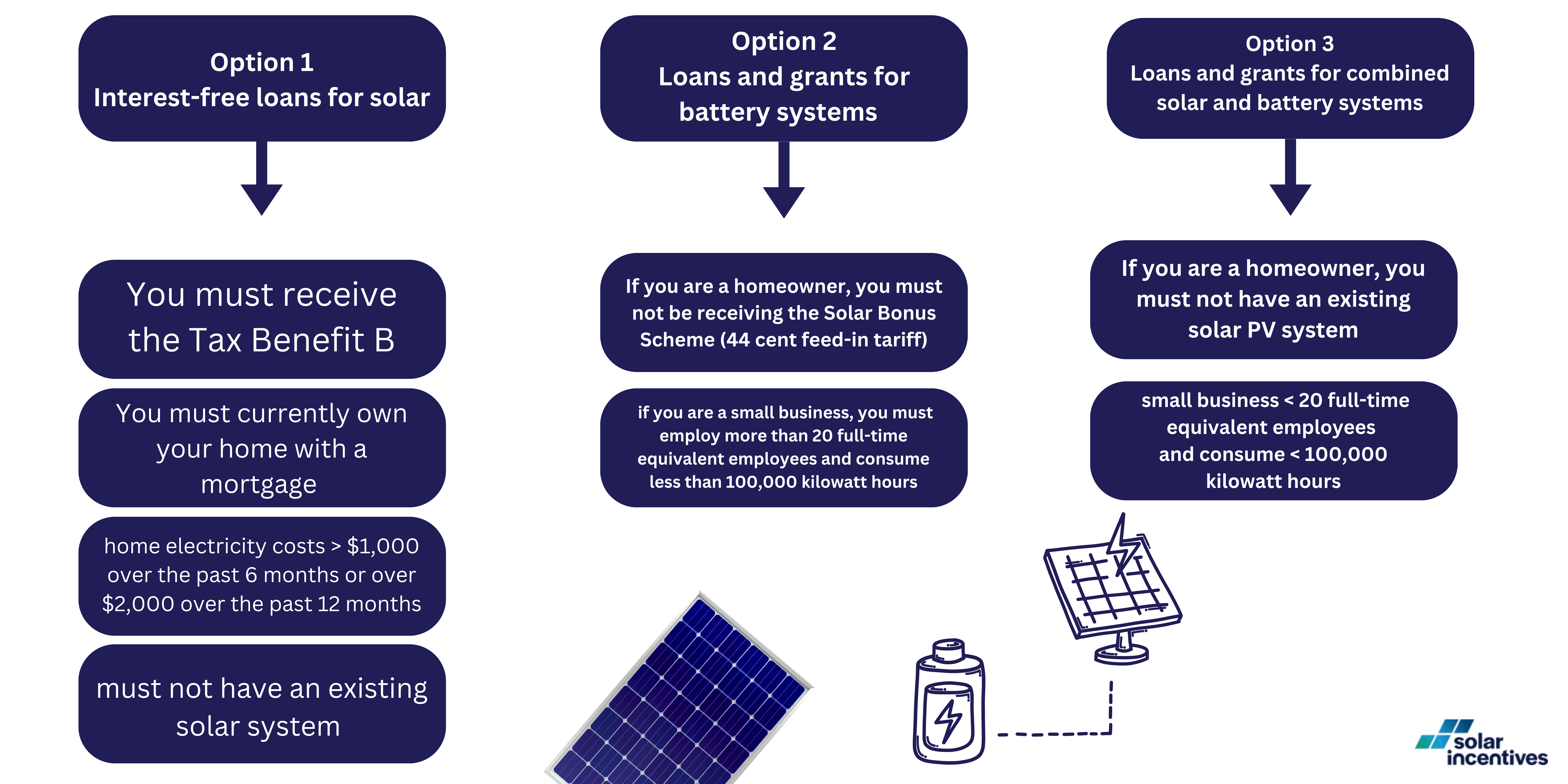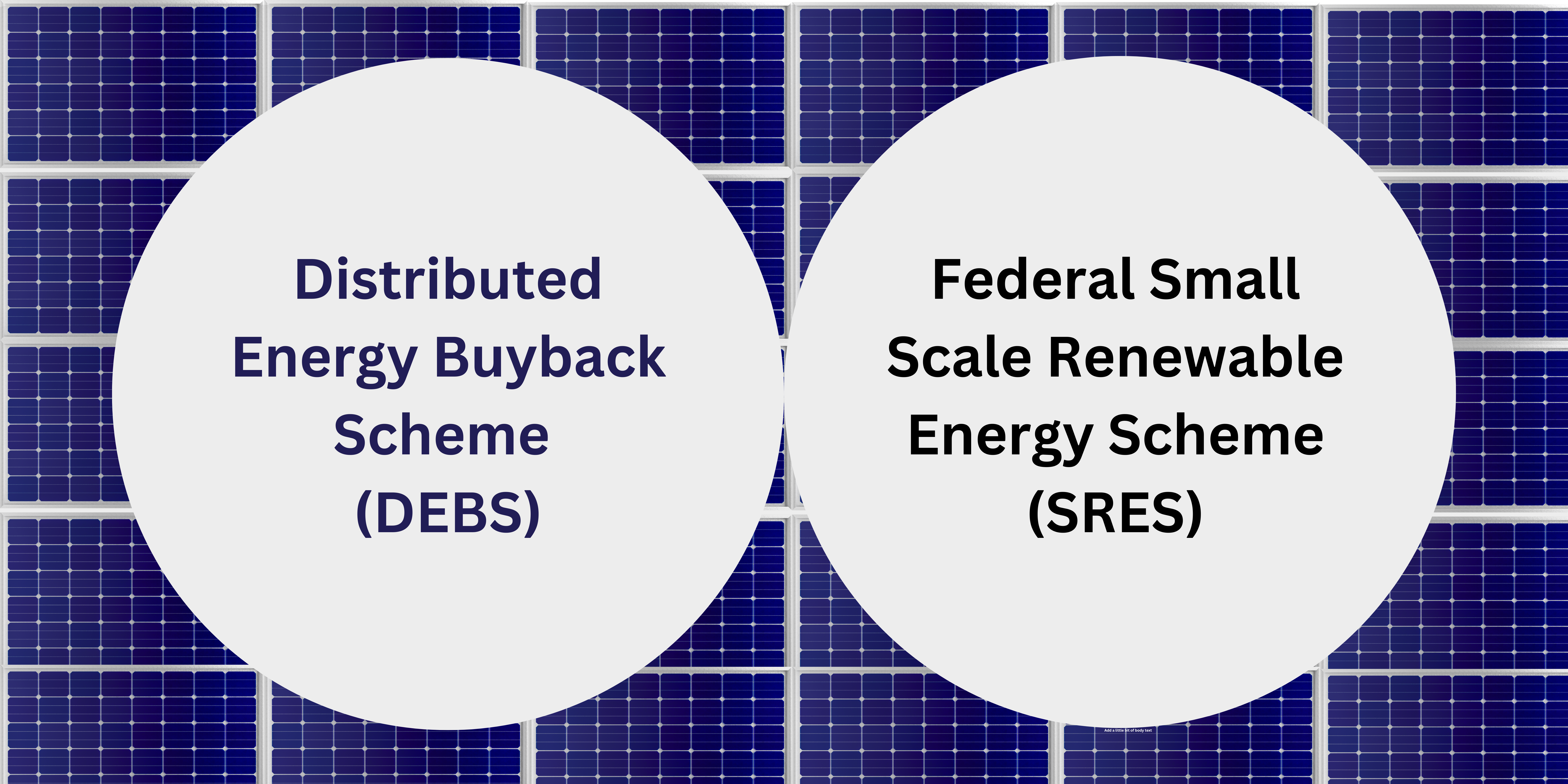How Much is the Solar Battery Rebate in Each State in Australia 2023?

Steve Hill
Expert in Residential and Commercial Solar Solutions and Energy Efficiency
4 min read · 28th August 2023
Australia’s sun-drenched landscapes are prompting many homeowners to tap into solar energy. Yet, as solar technology advances, questions about costs arise. This is where the 2023 solar battery rebate steps in. With different incentives across states, things might seem a bit complex. We’ve detailed the solar battery rebate for each region, simplifying your switch to renewable energy. Let’s dive in.
What is a Solar Battery Rebate?
A solar battery rebate is like a discount governments or energy groups give to people who buy solar batteries for their homes or businesses. This helps cut down the initial cost of the solar battery, making it easier for more people to use solar power and store it for later.

What is the reason behind it?
The idea of giving out solar battery rebates started because of the growing concern about our planet and the harm from using too many non-green energies, like coal. Australia gets a lot of sunshine, so it made sense for our leaders to encourage everyone to use more solar power. By offering rebates, they hoped more people would switch to this cleaner energy option.
How does it work at the National level?
On a big scale, Australia has set goals to use more green energy. Even though each state might have its own way of giving out solar battery rebates, there’s a bigger national plan guiding them. The main aim? To get more and more people across the country using renewable energy, and these rebates are one way to make that happen.
How Solar Battery Rebates Work in Each State of Australia
New South Wales (NSW)
In New South Wales, harnessing the sun’s power is becoming more affordable, thanks to the solar battery rebate. As the state works towards a greener future, residents are given enticing incentives.
Rebate Amount:
The NSW government aims for net-zero emissions by 2050, boosting solar with battery storage affordability. They provide a solar battery rebate, offering interest-free loans of up to $14,000 for homes to adopt solar batteries. Another $9,000 loan assists in adding batteries to existing systems.
Requirements for the homeowners:
- Live in participating postcodes
- Have an annual household income of less than $180,000
- Must be registered owner of the house and live in the house
- The house must be connected to grid electricity
- Pass the credit assessment
- Must have existing solar system to upgrade (battery-only loan)
How to Apply for the loan:
Here is a step-by-step guide of how to apply for the loan:

Make the most of the current incentives and lower solar battery expenses in 2023 to enhance your NSW home with a solar battery. Contact us to learn more and get started today.
Victoria (VIC)
Victoria is making progress in renewable energy. Many residents are interested in the 2023 solar battery rebate and its advantages. Let’s explore!
Rebate Amount:
Victoria’s scenic landscapes are witnessing increased solar energy accessibility. The state introduced a 2023-24 interest-free solar battery loan scheme, offering 4,500 loans at $8,800 each. Eligibility criteria are in place.
Requirements:
To be eligible, homeowners must:
- You own and reside in the property where the system will be installed.
- Combined owners’ taxable income is under $210,000 per year.
- Property valuation is below $3 million.
- Property hasn’t received a solar battery rebate before.
- Property has a solar panel system with 5kW+ inverter or plans for both.
- Chosen energy storage is 6kWh+ and listed on Solar Victoria’s battery product list.
- No existing energy storage system.
- DNSP pre-approval for grid connection.
- Owners open to DNSP’s battery trial updates for optimized benefits.
How to Apply for Solar Battery Loan:

Step 1: Understand Your Solar Battery Needs
- How do you currently consume energy?
- Which battery size suits you best?
- What will it cost, and how much will you save?
- What other factors should be on your checklist?
- Is now the right time for a solar battery?
- Decide if you want your battery to work independently. This might mean checking your home’s energy needs and if there’s any need for electrical tweaks.
Step 2: Choose the Right Solar Retailer
Step 3: Getting Grid Connection Approval
Your retailer requires DNSP approval for battery grid connection. DNSPs authorize solar setups to link with the grid.
Here’s what you should do:
- Confirm DNSP pre-approval from your retailer.
- Verify solar export limits for feed-in tariffs and Virtual Power Plants.
- After your retailer uploads the quote, anticipate an email with a link for your eligibility review initiation.
Step 4: Start Your Preliminary Application
Step 5: Confirming Your Identity
For verification, you’re required to provide information from two distinct ID forms. Your choices include:
- Driver’s license or Learner Permit
- Medicare card
- Australian passport
- Australian birth certificate
- Australian citizenship certificate
- Foreign passport (ensure it pairs with a valid Australian Visa)
- Immicard
Double-check that the names on your selected documents match perfectly.
Step 6: Validating Property and Income
Property Ownership:
- Present local council rates notice as ownership proof
Income Verification:
- Each property owner on council rates notice or Certificate of Title must provide income evidence.
- For multiple owners, each person submits income documents from the same financial year.
Remember, you, the homeowner must complete this preliminary eligibility check, not the solar retailer.
Step 7: Apply here https://service.vic.gov.au/services/solar-homes
Step 8: Arrange installation
During installation, the QR code in your loan email is scanned. You have 120 days from approval for setup completion. After setup, subtract the loan from the total and pay the retailer. Loan payments start 30 days post-setup approval.
Victoria’s rebate offerings are paving the way for a brighter, greener future. Don’t miss out on this opportunity. Get in touch with us at https://solarincentives.com.au.
Queensland (QLD)
Under the Australian sun, residents and businesses are wondering: What’s Queensland’s solar battery rebate? Before exploring that, let’s discover its incentive choices.
Incentive options:

OPTION 1: Interest-free loans for solar
- You must receive the Tax Benefit B
- You must currently own your home with a mortgage
- Your home electricity costs must be more than $1,000 over the past 6 months or more than $2,000 over the past 12 months
- You must not have an existing solar system
OPTION 2: Loans and grants for battery systems
Homeowners:
- Not receiving Solar Bonus Scheme (44 cent feed-in tariff).
Small Businesses:
- Employ > 20 full-time equivalent employees.
- Consume < 100,000 kWh (or 100 MWh) annually.
OPTION 3: Loans and grants for combined solar and battery systems
Homeowners:
- No existing solar PV system.
Small Businesses:
- < 20 full-time equivalent employees.
- < 100,000 kWh (or 100 MWh) electricity consumption annually.
The Amount of Rebate:
In 2023, Queensland takes the lead. For those embracing solar battery packages, enjoy up to $3,000 rebate. This step aims to enhance solar with battery storage affordability for residents.
The Requirements:
Eligibility Criteria for Queensland’s Solar Battery Rebate:
- Homeowner or tenant with homeowner’s consent.
- Install a new, eligible solar battery system.
- Use CEC (Clean Energy Council) accredited installer.
- Approved product listing required for solar battery package.
How to Claim:
Claiming the solar battery rebate in Queensland is a streamlined process:
- Research and choose a CEC-accredited installer.
- Get a quote for an eligible solar battery package.
- Install the system in your residence.
- The installer will provide you with the necessary documentation.
- Submit the documents, along with the claim form, to the relevant Queensland government department or agency.
- Once approved, the rebate amount will be transferred directly to your bank account
Queensland’s solar battery rebate brightens the path to a solar-charged future. Switch now to embrace the sunlit Australian landscapes for eco-friendly and financial gains.
South Australia (SA)
In South Australia, the sun’s energy is harnessed, just like its iconic landscapes. The question arises: “What’s the solar battery rebate?” The answer mirrors the state’s dedication to sustainable and economical energy.
The Amount of Rebate:
South Australia’s $100 million Home Battery Scheme offers up to $3,000 in savings on solar batteries for households. Secure loans from Clean Energy Finance Corporation and buy from approved providers to benefit.
The Requirements:
To claim South Australia’s federal solar rebate, use CEC-approved panels, inverters, and batteries. Install with a CEC-accredited professional.
How to Claim:
Claiming the South Australia rebate is simple:
- Choose a CEC-accredited installer.
- Get a quote for a qualifying battery system.
- The installer provides the required documents.
- Submit documents and claim forms to the government.
- After approval, the rebate is credited to your account.
South Australia is at the forefront of Australia’s green revolution, using the solar battery rebate as a symbol of its commitment to clean energy. Contact us at https://solarincentives.com.au and embark on your journey towards a greener tomorrow.
Western Australia (WA)
Amid Western Australia’s diverse landscapes, the allure of solar energy is growing. As residents embrace sustainability, the question arises: “Is there a solar battery rebate in Western Australia?” Although a direct rebate isn’t available, the state is exploring alternatives like Virtual Power Plant subsidies, illuminating the potential savings from solar battery packages.
The Amount of Rebate:

For Western Australians eager to gauge potential savings from the solar battery rebate, there are two significant government solar incentives at play. These include the Distributed Energy Buyback Scheme (DEBS) and the Federal Small Scale Renewable Energy Scheme (SRES).
- Distributed Energy Buyback Scheme (DEBS) offers rewards for feeding renewable energy back into the grid through solar panels, home batteries, and electric vehicles. To participate, ensure your energy system’s capacity aligns with 5 kW, or up to 6.6 kW with an inverter capacity of 5 kW. Your annual property electricity consumption should also be under 50 MWh. In 2022, DEBS provides feed-in tariffs from 2.5 cents per kWh during off-peak hours to 10 cents during peak times.
- Federal Small Scale Renewable Energy Scheme (SRES) encourages the adoption of green energy systems like solar panels, water heaters, wind, and hydro systems. Installing these systems can earn you small-scale technology certificates, often benefiting your installer and reducing upfront solar with battery storage costs.
The Requirements:
When exploring the benefits of a solar battery package in Western Australia, remember these:
- Select a certified professional for your solar panel installation.
- Opt for a grid-connected solar system instead of a standalone setup.
- Obtain necessary approvals from both Synergy and Western Power before moving forward.
How to Claim:
When setting up a new solar panel system, either you or your installer needs to complete a DEBS application. The application is straightforward; just visit the Synergy or Horizon Power websites to participate in DEBS.
The solar battery rebate reflects WA’s commitment to a brighter, sustainable future. Join the journey towards greener living. Connect with us at https://solarincentives.com.au and step into a sustainable tomorrow.
Tasmania (TAS)
In Tasmania, a captivating island state celebrated for its untamed wilderness, clear waters, and cultural heritage, a new frontier is emerging: sustainable energy. As the crisp Tasmanian air carries the whispers of potential, a question echoes: “What is the solar battery rebate value in Tasmania?”
The Amount of Rebate:
The main incentive at present is the federal government’s STC program. Under this initiative, eligible individuals can receive subsidies for various items such as solar panels, solar hot water systems, and yes, even solar batteries.
The Requirements:
If you’re in Tasmania and looking to make the most of the solar battery rebate, here are the requirements:
- You need to be a homeowner or a tenant with the homeowner’s consent.
- Install an eligible solar battery storage system.
- Ensure the installation is carried out by a Clean Energy Council (CEC) accredited professional.
- The chosen solar battery package must be listed on the state’s approved product list.
How to Claim:
- Usually handled by your solar installer.
- The quoted system price already includes the rebate.
- No need for homeowners to apply separately.
- Essential to choose a reliable and experienced installer.
- Ensure the installer has CEC accreditation for the best results and benefits.
Tasmania, an emblem of natural beauty and resilience, is forging a path towards a sustainable tomorrow.
Northern Territory (NT)
In the heart of expansive deserts, against the backdrop of iconic rock formations and vibrant indigenous heritage, the Northern Territory (NT) is embarking on a new journey: a commitment to sustainable energy.
The Amount of Rebate:
In the Northern Territory (NT), residents, businesses, and not-for-profit organizations have the chance to engage with the Home and Business Battery Scheme. This program offers a grant that provides $400 for every kilowatt hour of your system’s capacity, with a maximum grant of $5,000. If you’re a homeowner with a business, you’re eligible to apply for both categories.
The Requirements:
If you’re in the NT and aiming to avail of this solar battery rebate, remember that If you are both a homeowner and a business owner, you can submit separate applications for a grant for your home and your business.
To be eligible for a rebate, you must be:
- a registered owner of a residential property in the Northern Territory
- a registered business in the Northern Territory
- a not-for-profit or community organisation operating in the Northern Territory in either owned or leased properties
Each homeowner can apply once per property, whether the property is for personal or investment use.
How to Apply:
To apply for the Home and Business Battery Scheme, follow these steps:
- Check your eligibility
- Get a quote from a qualified system installer or provider. To check the certification requirements, go to the NT WorkSafe website (https://worksafe.nt.gov.au/forms-and-resources/bulletins/certification-requirements-for-installing-photo-voltaic-pv-panels-on-buildings) There is no minimum number of quotes.
- After selecting a preferred quote, apply online through GrantsNT(https://grantsnt.nt.gov.au/grants/home-and-business-battery-scheme-grant-recipient-applications) to receive a unique voucher.
Explore the stunning landscapes of the Northern Territory (NT) and its commitment to sustainable energy. Don’t miss your chance to contribute to a brighter tomorrow. Get in touch at https://solarincentives.com.au to join NT’s renewable energy movement.
Australian Capital Territory (ACT)
In the Australian Capital Territory (ACT), central to Australia’s governance, there’s a rising wave of sustainable practices. Let’s explore solar battery rebates in the Australian Capital Territory (ACT).
The Amount of Rebate:
Residents in the ACT can lessen their solar with battery storage costs through the ACT government’s Next-Gen Energy Storage Program. This initiative offers a significant solar battery rebate, aiming to support nearly 5,000 battery systems for homes and businesses throughout the region.
The essence of the ACT solar battery package is a subsidy based on the battery’s output. Currently, the rebate is $825 for every kilowatt of Sustainable Peak Output (SPO). Specifically:
- For homes: up to 30 kW, with a rebate ceiling of $24,750
- For businesses: up to 50 kW, with a max rebate of $41,250
The program started in 2016 and ended on January 11, 2023, after hitting its goal of 5,000 battery installations. We’ll share any updates if a new ACT Solar Battery Rebate is introduced!
How can I get a solar battery rebate?
Start your move to cleaner energy now. Try our quick, easy quiz and connect with a nearby solar specialist. They’ll help you navigate the rebate process for your state, ensuring you benefit fully. Ready to make your switch to sustainable power?
Article By
Steve Hill
Steve Hill has a rich background in the solar energy sector and is dedicated to empowering consumers with knowledge, particularly in residential and commercial solar solutions, solar batteries, and energy efficiency products.
Steve enjoys sharing his wealth of experience, offering practical advice, and learning about the latest trends and innovative solutions in the world of solar energy.
